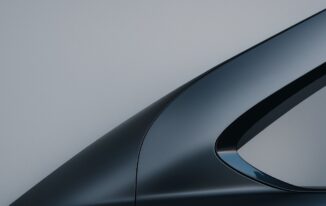Most people don’t think twice before getting a ride from apps like Uber and Lyft because it’s easy, convenient, and often cheaper than calling a taxi. It’s also easier to get a ride on short notice and in busy areas where cab companies don’t have a big staff. However, rideshare services are risky. You’re basically getting a ride from a complete stranger. They’re a stranger to you and a stranger to the company.

There’s plenty that can go wrong when using a rideshare service, and there’s no guarantee you’ll get a driver with great driving skills. In fact, many people have sued Lyft after being injured in accidents caused by their drivers. In most cases, injured parties are compensated by Lyft’s insurance directly, but it takes a personal injury lawyer to negotiate a fair settlement because insurance companies lowball their offers.
Clean background checks don’t mean much
Although both Uber and Lyft run background checks on their drivers, the lack of an employee relationship and no formal assessment or interview process means anyone without a criminal record can sign up to become a driver. This includes unstable individuals who would have been weeded out during a real interview process.
While some people might argue that the same risk is present when you call a cab, it’s actually different. Cab companies perform formal interviews and if they care about their reputation, they won’t hire people who give off strange vibes. Lyft and Uber, on the other hand, don’t care who signs up to be a driver as long as their record is clean. Traditional taxis are equipped with security cameras and driver conduct is closely monitored. Employees are also held to much higher employment standards.
Having a clean record doesn’t mean much, considering all the horror stories people share about their rideshare drivers. Like the Uber driver in Denver who shot and killed his passenger after an argument, or the driver who tried to rape his passenger and when she fought him off, shot her in the head and dumped her body in the woods near her home.
One of the scariest horror stories is the case of Jason Dalton. While driving for Uber one day, he drove around to various locations where he shot 8 random people, killing 6, while picking up riders between his kills. One of Dalton’s passengers called for a ride as an alternative to walking when he heard there was an active shooter on the loose, but had no idea he had just gotten into a car with the shooter.
What ever happened to “stranger danger?”
Decades ago, parents and teachers were adamant about telling kids never to accept rides from strangers because you can’t trust anyone you don’t know. In the 70s and 80s, parents were on edge regarding serial killers and rapists picking up hitchhikers and luring kids away from schools, and there was a big emphasis on “stranger danger.” This sentiment continued throughout the 1990s and early 2000s, but as soon as ridesharing services became popular, people changed their perception about getting rides from strangers.
For some reason, when a stranger works as a contractor for a company like Lyft or Uber, the perception of risk is greatly reduced. However, this is a dangerous shift in perception. The people hired by rideshare companies are not employees, and they don’t go through any formal interview, screening, or training by the company. If you see some of the people who end up hurting, killing, or just scaring their passengers in news clips, you can often tell they’re not stable. Had they been hired by a company with a formal, in-person vetting process, it’s likely that many of them would have never passed an interview.
Just because people drive as a contractor for a well-known rideshare company doesn’t mean that company has vetted the individual driver. While it may not be easy or convenient to call a cab, it is safer and reduces the risk of running into an unstable driver. Of course, many rideshare drivers are amazing and go above and beyond for their passengers, but there are far too many horror stories to ignore the fact that rideshare services, like Uber and Lyft, are inherently dangerous. You don’t know who you’re getting for a driver, and once you’re in the vehicle, you may not be able to get out.
If you’re going to use rideshare services, you should at least carry personal protection, like pepper spray (if it’s legal in your state).
However, the best solution is to avoid rideshare services altogether and call a traditional cab to minimize your risk.



